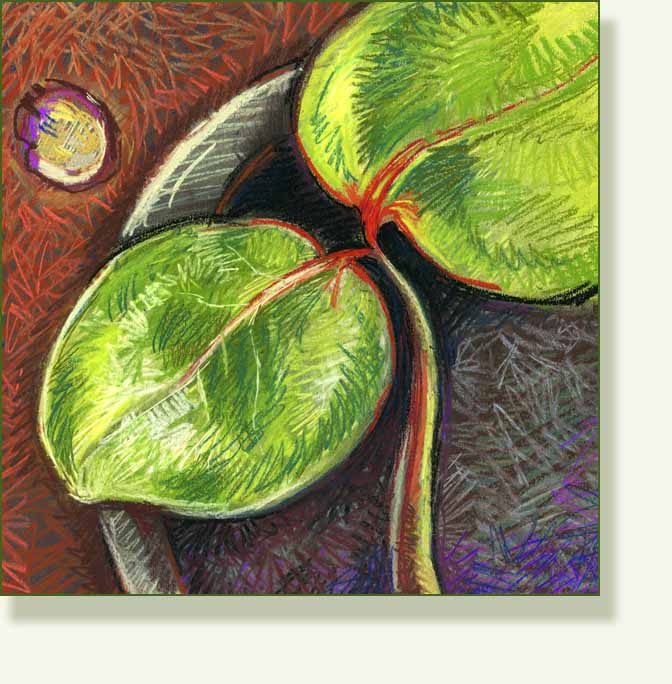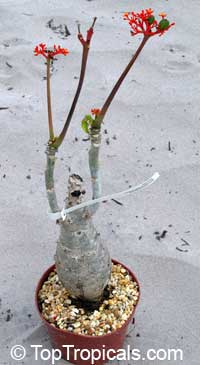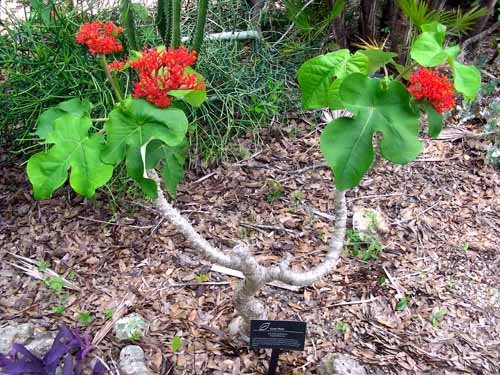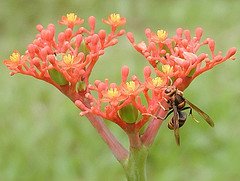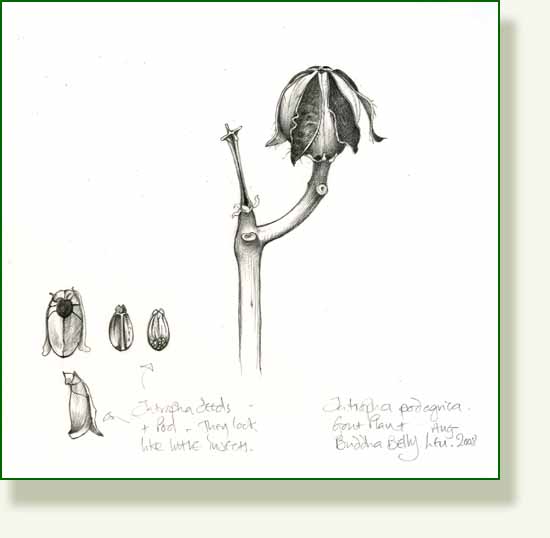The Buddha Belly ( Jatropha podagrica) seedling is growing very fast. In 4 days it has gone from just showing above the soil, to a magnificent 5 inches long with two gorgeous brilliant green seed leaves. I don’t think I have ever seen anything grow quite so fast. I wanted to just remind myself of the different parts of the seedling. It’s knowledge that has lain well and truly shrouded in the mists of the years that have elapsed between the school broad bean experiments and now. The excitement of the experiments remained, though and I do love diagrams, so here are some bits of basic knowledge.
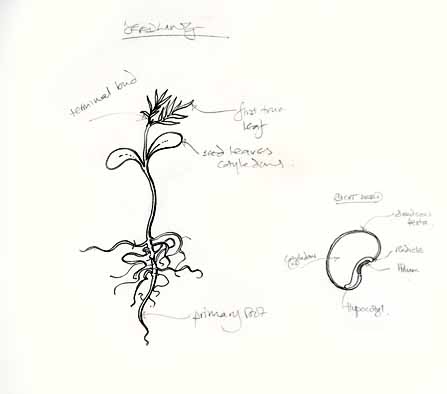
The seed:
Seed coat – (testa) the outer, protective layer that covers the seed. It is shed after the plant sprouts.
Embryo – developing plant still inside the seed. The embryo has cotyledons and the start of the radicle, which will become the root and the hypocotyl which becomes the stem.
Hilum – the scar on a seed coat at the location where it was attached to the plant’s stalk during development
Micropyle – the small pore in a seed that that allows water absorption.
The seedling. based on the soapberry tree seedlings that I have.
Cotyledon – also called seed leaves the first to show and containing some food for the plant and bearing very little resemblance to the plant which will follow.
First true leaves – the first two leaves of the plant that emerge from the cotyledon which will begin photosynthesis.
Primary root – the main, thick part of the root and the first part to grow.
Secondary root – small roots that grow from the primary root.
Looking after these little seedlings is a responsibility and I have to move some of the Desert Rose seedlings this weekend. I wish I had had one of these.
This is an article from SustainableDesignUpdate.com here
“Seedling” by Brett Duncan “is a biodegradable pot you can layer into larger ones when the plant out grows it. It stresses the plant less because you don’t have to dig up its root structure and less mess because you just place one Seedling in the next size up. “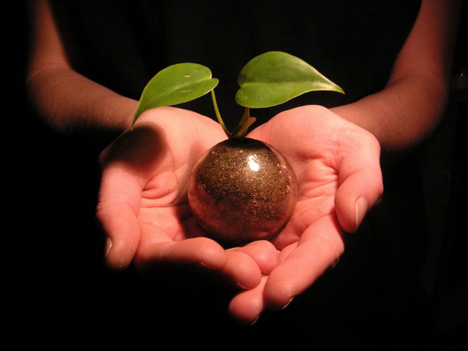
The designer Brett Duncan talks about his elegant creation.
” The psychology behind the everyday object is what intrigues me, especially the possibilities that designers have to create better and exciting experiences for others while also maintaining a level of respect for the cultures and environments in our world.
I am excited about creating new opportunities for people that will inspire wonder and curiosity, and a greater appreciation for the unusual that is found in our everyday lives.
Just to help explain some of the questions of the project Seedling, the seed starts in a sphere so that it can be surrounded by soil and nutrients, as well as moisture when it is watered to help simulate how seeds germinate naturally. Each pot has nutrients and soil combined with the biodegradable plastic.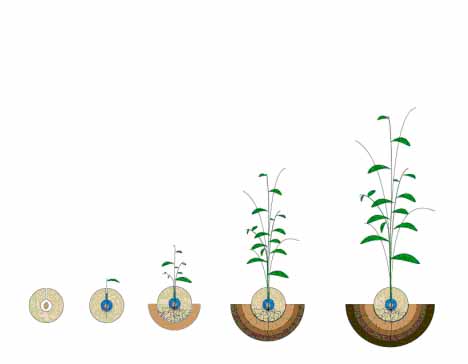
The user can also tell if the plant needs to be watered by picking up the pot. The plastic absorbs a certain amount of the water so the elasticity changes depending on the saturation of the soil.
I believe that plants have been adapting to us for far to long, maybe it’s time we reciprocated the gesture.”
I did a quick pastel sketch of my seedling for a change.
__________________________________________________


